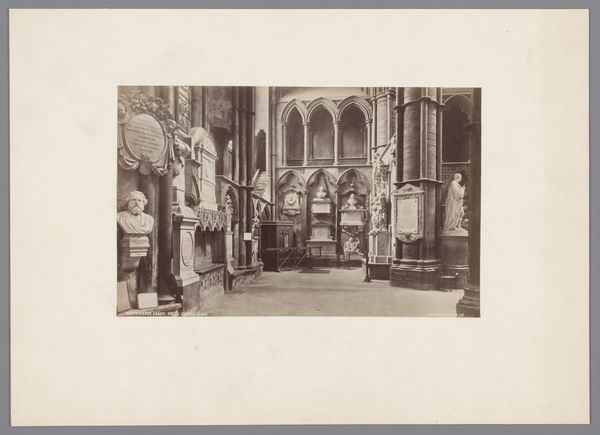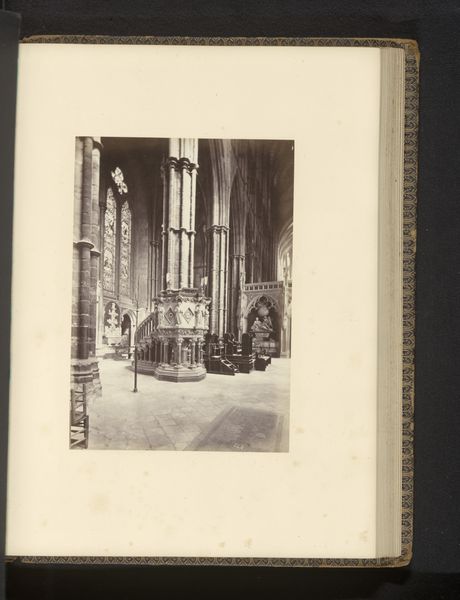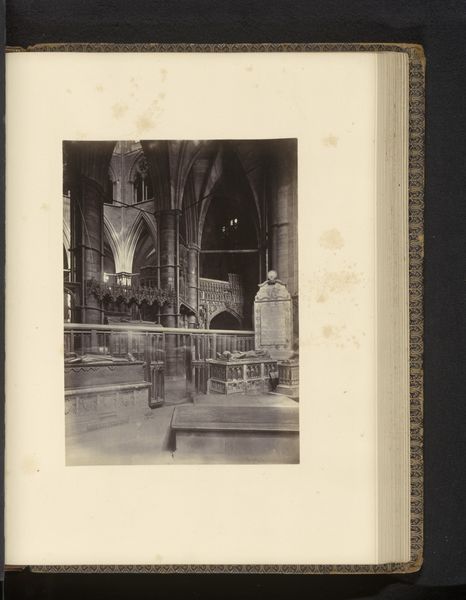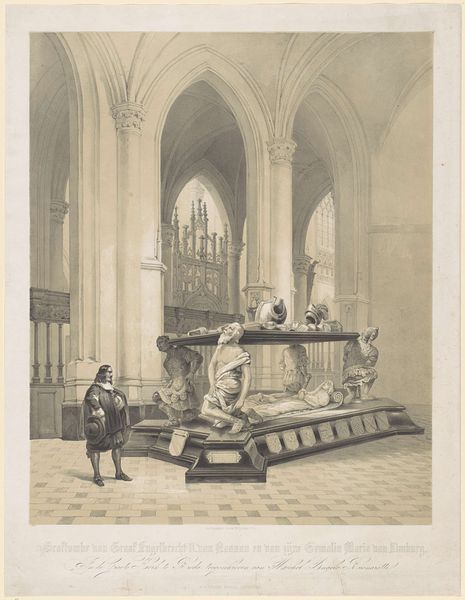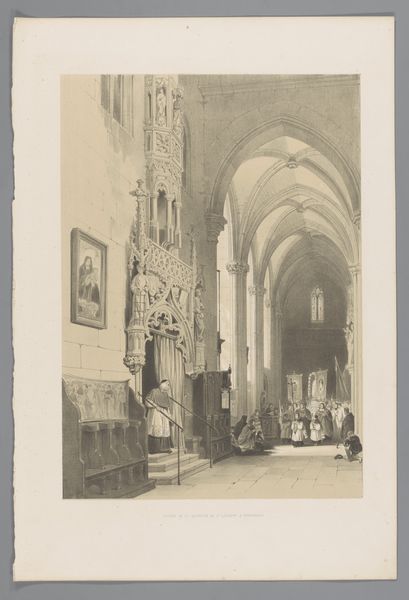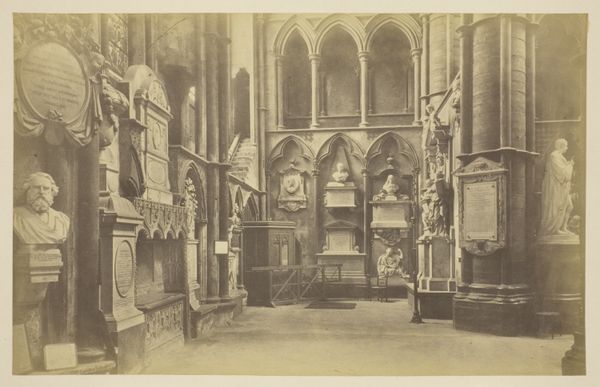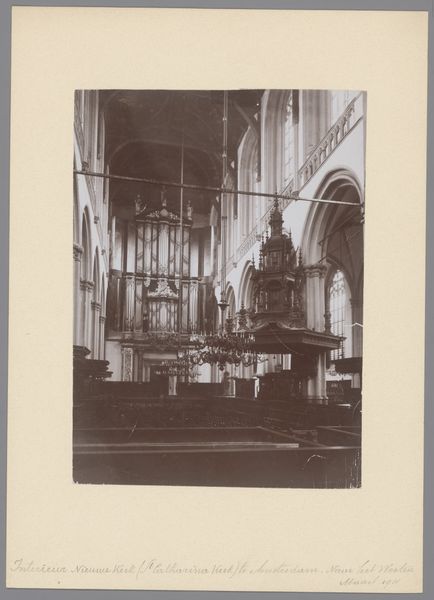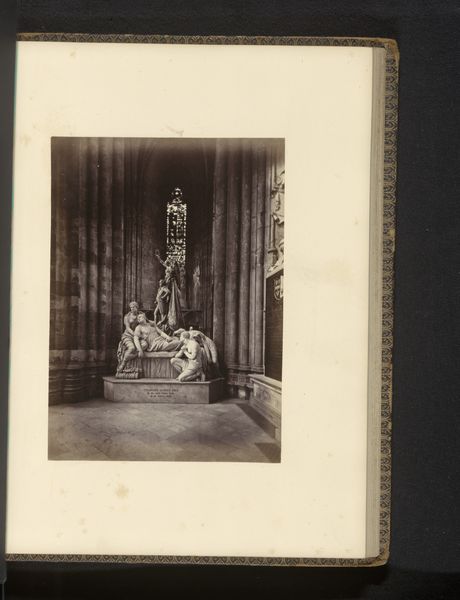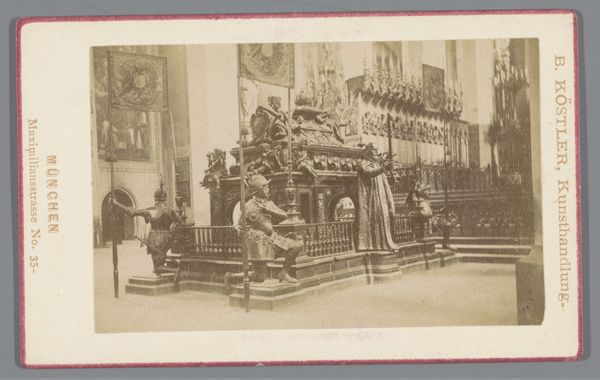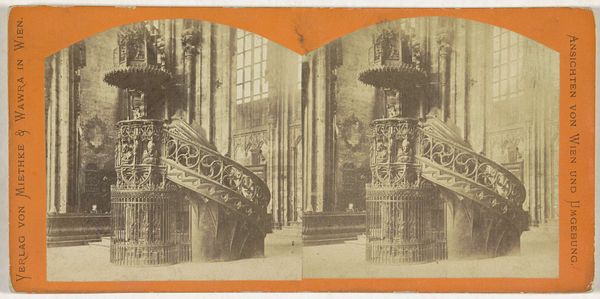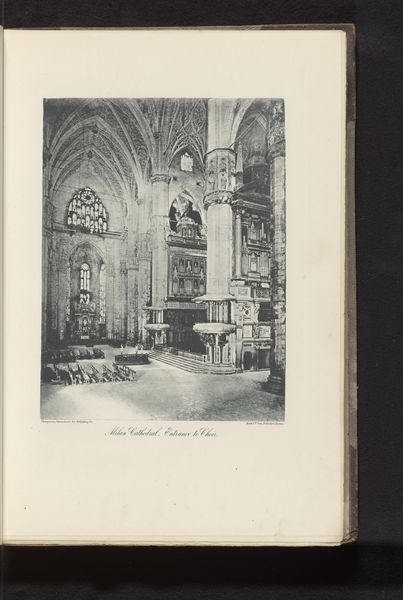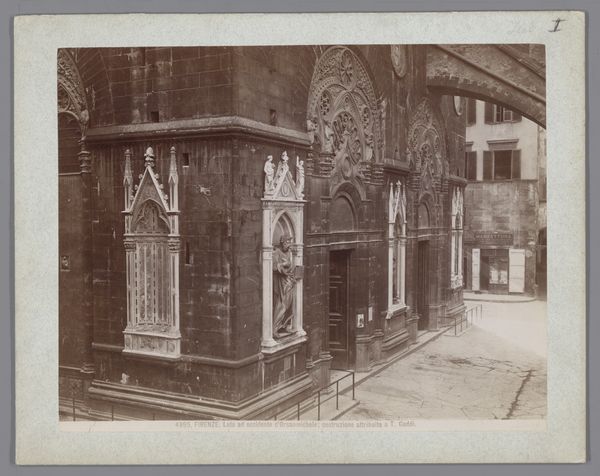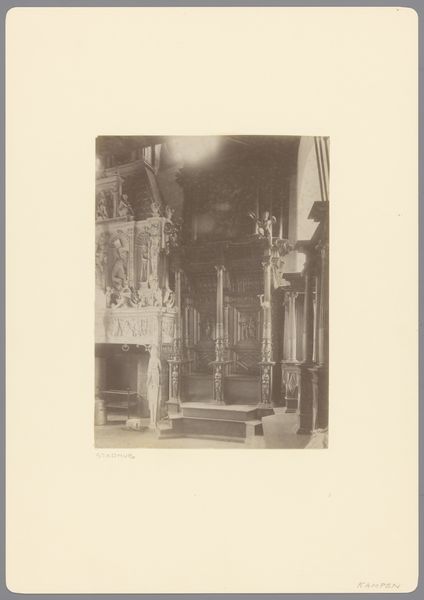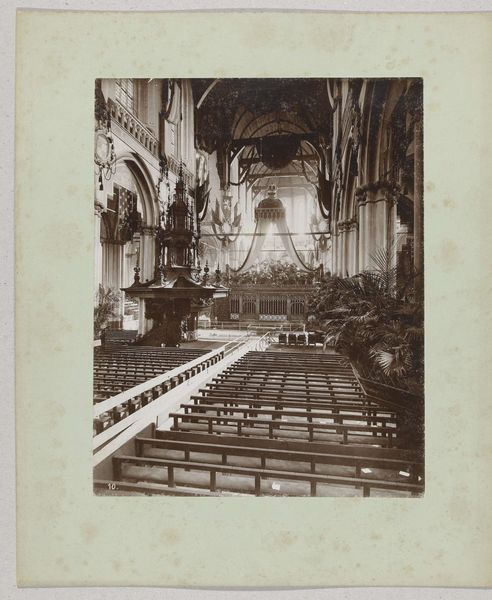
Fotoreproductie van een foto van Poets' Corner in Westminster Abbey, Londen, met links een buste van Henry Longfellow 1890 - 1905
0:00
0:00
francisfrith
Rijksmuseum
print, photography, albumen-print
# print
#
landscape
#
photography
#
orientalism
#
cityscape
#
albumen-print
#
realism
Dimensions: height 77 mm, width 111 mm
Copyright: Rijks Museum: Open Domain
Editor: This is a photographic reproduction from between 1890 and 1905 by Francis Frith, showing Poet's Corner in Westminster Abbey. It feels quite… austere, almost ghostly with the blue tone. All those stone monuments. How should we interpret this work? Curator: It's important to consider the historical context of memorialization and its relationship to power. Whose stories are told in Poet's Corner? Which voices are enshrined in these monuments, and which are conspicuously absent? The photographic reproduction, a relatively new medium at the time, democratized access to this elite space, didn’t it? How might that impact the social understanding of who gets remembered? Editor: So you're suggesting that the photo itself challenges the exclusive nature of Poet's Corner? Curator: Precisely! Photography makes the space and its enshrined figures more accessible. It makes you consider who has access and who controls the narratives being presented. How might contemporary discussions around decolonization and representation change how we view such spaces and their associated photographic records today? Editor: I hadn't considered that. The albumen print emphasizes the whiteness of the marble, too, which definitely strengthens that narrative. Curator: Indeed! This photograph also perpetuates a specific vision of history, likely one that centers certain (often white, male) literary figures. Examining its choices highlights the power dynamics inherent in creating cultural heritage. Does the photographer, through their choices in composition and light, reinforce the authority of these figures, or does the new medium challenge this historical power? Editor: It gives me a lot to think about regarding the choices of what we memorialize and how. I see it differently now. Curator: Exactly! Recognizing these dynamics allows us to critically engage with how history is presented and whose stories are privileged.
Comments
No comments
Be the first to comment and join the conversation on the ultimate creative platform.
